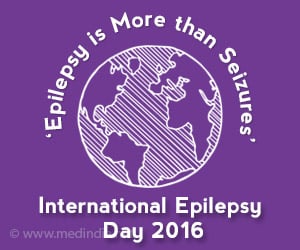- Epilepsy is a nervous system disorder characterized by repeated seizures.
- Genetic factors played a role in 40% of patients with first presentation of seizure.
- Whole genome sequencing and panel testing yield more data for diagnosing early-life epilepsy when compared to microarray and karyotyping.
Epilepsy is a central nervous system disorder characterized by unprovoked and recurrent seizures. Seizures are a result of sudden rush of brain activity. Seizures affect the way one acts or behaves for a short period of time. Epilepsy affects all age groups but is more common in young children and older adults. Treatment with the right medications can control seizures for around 80% of people with epilepsy.
- Temporary confusion
- A staring spell
- Uncontrollable jerking movements of the arms and legs
- Loss of consciousness or awareness
The study was conducted by analyzing the results of 775 children with seizure onset before their third birthday. Participants were treated at 17 centers in the U.S. that are in the Pediatric Epilepsy Research Consortium. Neonates who had unprovoked seizures and not an immediate response to stimulus were also included.
Early-life epilepsies are often a consequence of numerous neuro-developmental disorders, most of which are proving to have genetic origins. This makes genetic testing crucial in diagnosis. Genetic testing involves reading the DNA of the patient to determine cause of the disease. There are many types of genetic testing and the effectiveness varies.
- Karyotyping: Reads only large deletions or additions in the genome.
- Micoarray: Used to determine expression levels of a gene and thereby relate it to whether the gene is functional or not.
- Epileptic gene panel: This tests for alterations in already known epilepsy related genes. However, if the cause is somewhere else, these may be missed.
- Whole Genome Sequencing: This reads the entire DNA sequence letter by letter and shows even minute alterations in the DNA. However, the test is expensive.
The current study also showed that -
- Genetic testing provided a diagnosis in 25% of the children whose cause would have otherwise remained unsolved.
- Specific genetic factors were found to be the cause in 40% of patients with the fist presentation of seizure.
Concluding with the words of the corresponding author, Anne T Berg, she said "Precision medicine means nothing without precision diagnosis, and we can now provide precision diagnosis. Genetic testing should be incorporated into the routine initial evaluation of young children with epilepsy."
- Overview - Epilepsy - (http://www.mayoclinic.org/diseases-conditions/epilepsy/home/ovc-20117206)
- Berg, A. T., Coryell, J., Saneto, R. P., Grinspan, Z. M., Alexander, J. J., Kekis, M., . . . Koh, S. (2017). Early-Life Epilepsies and the Emerging Role of Genetic Testing. JAMA Pediatrics. doi:10.1001/jamapediatrics.2017.1743
















